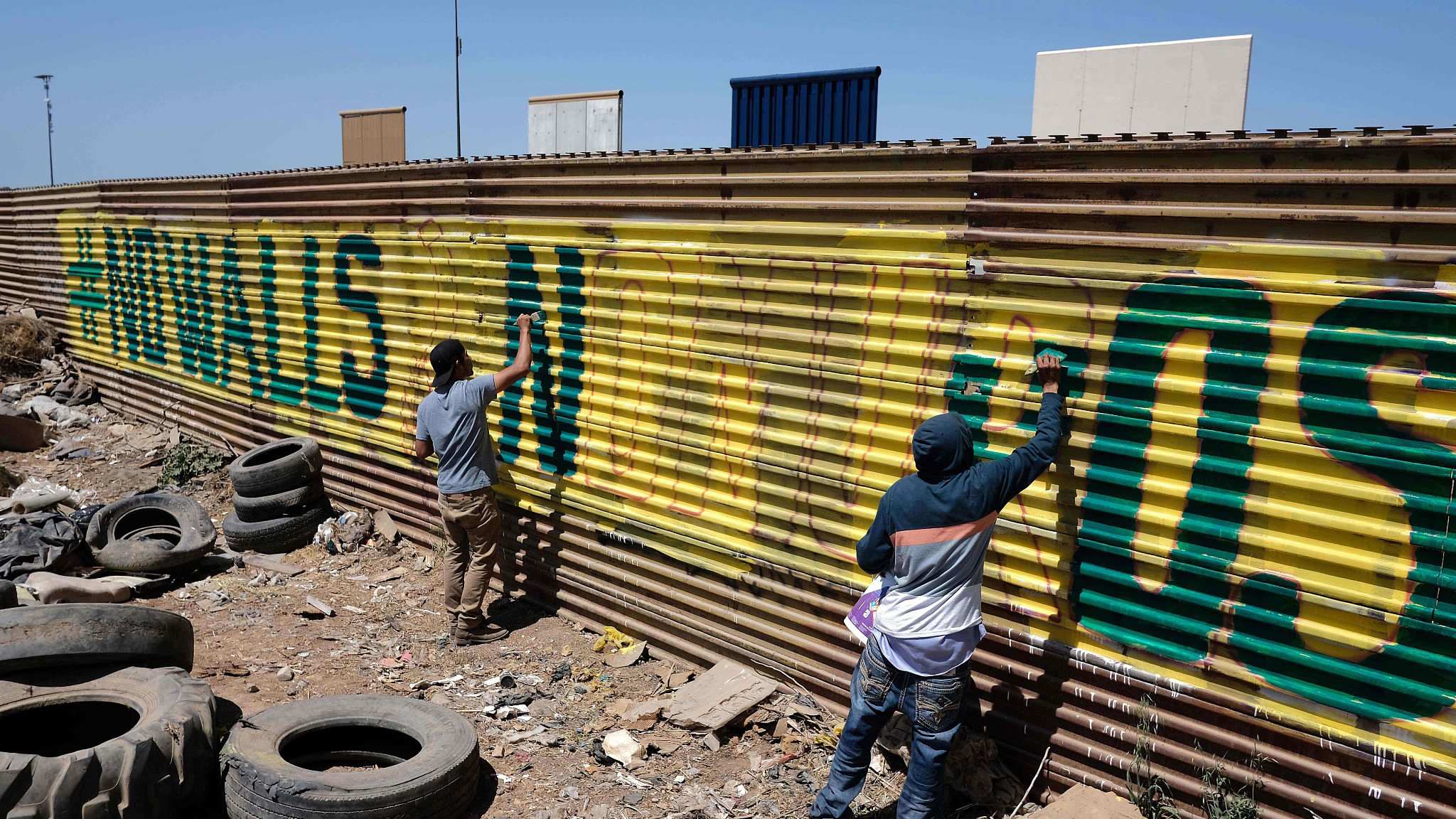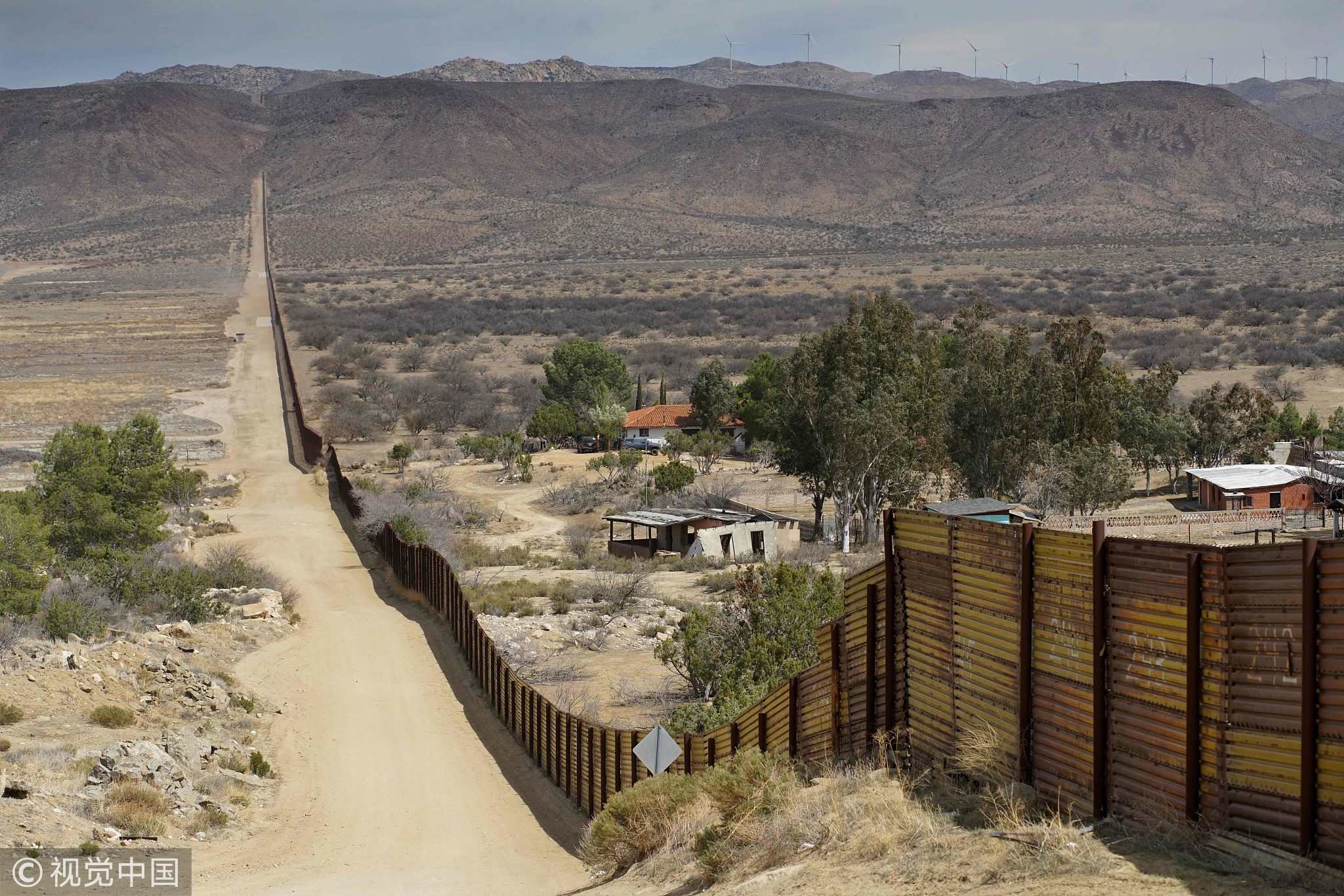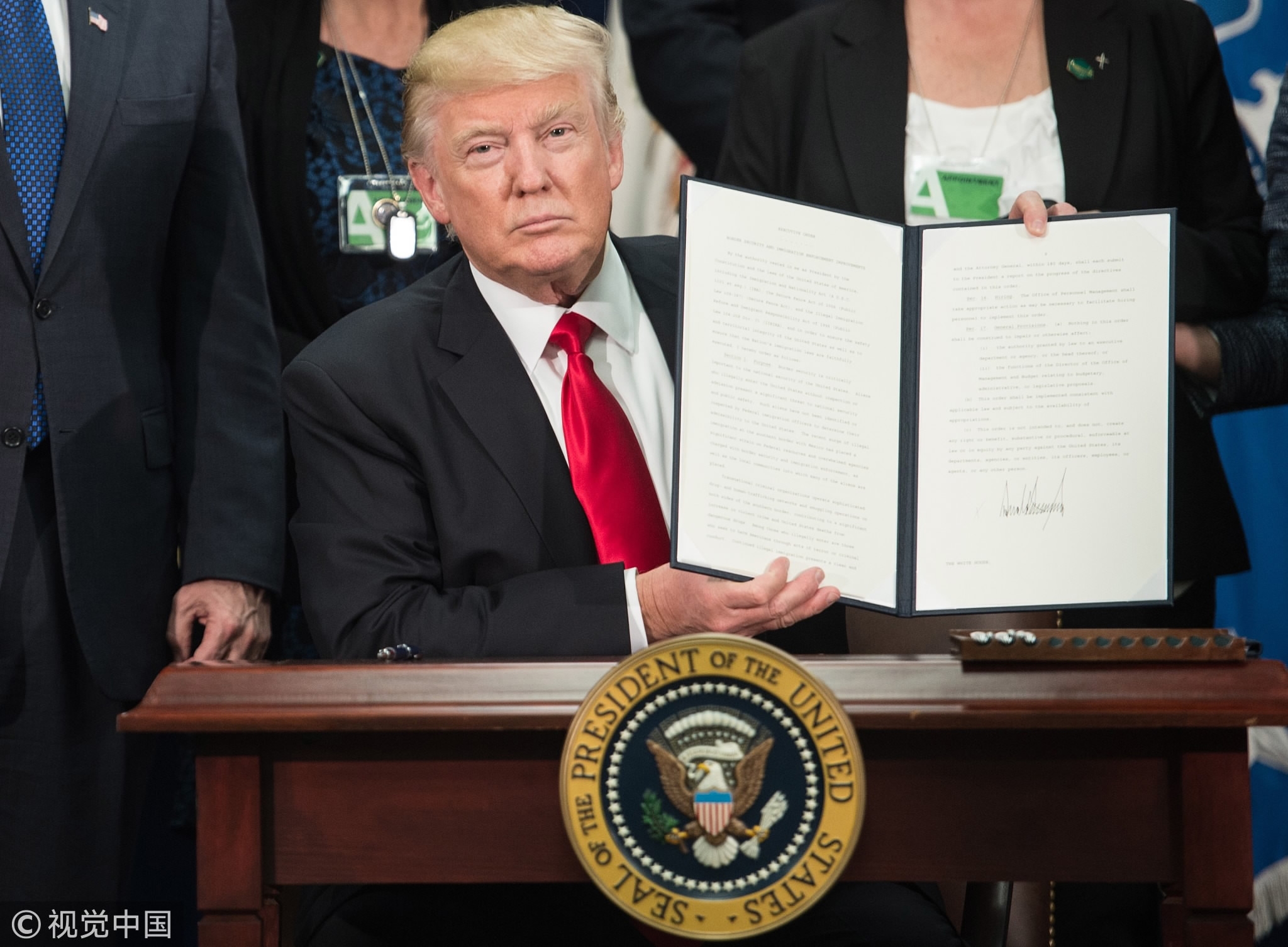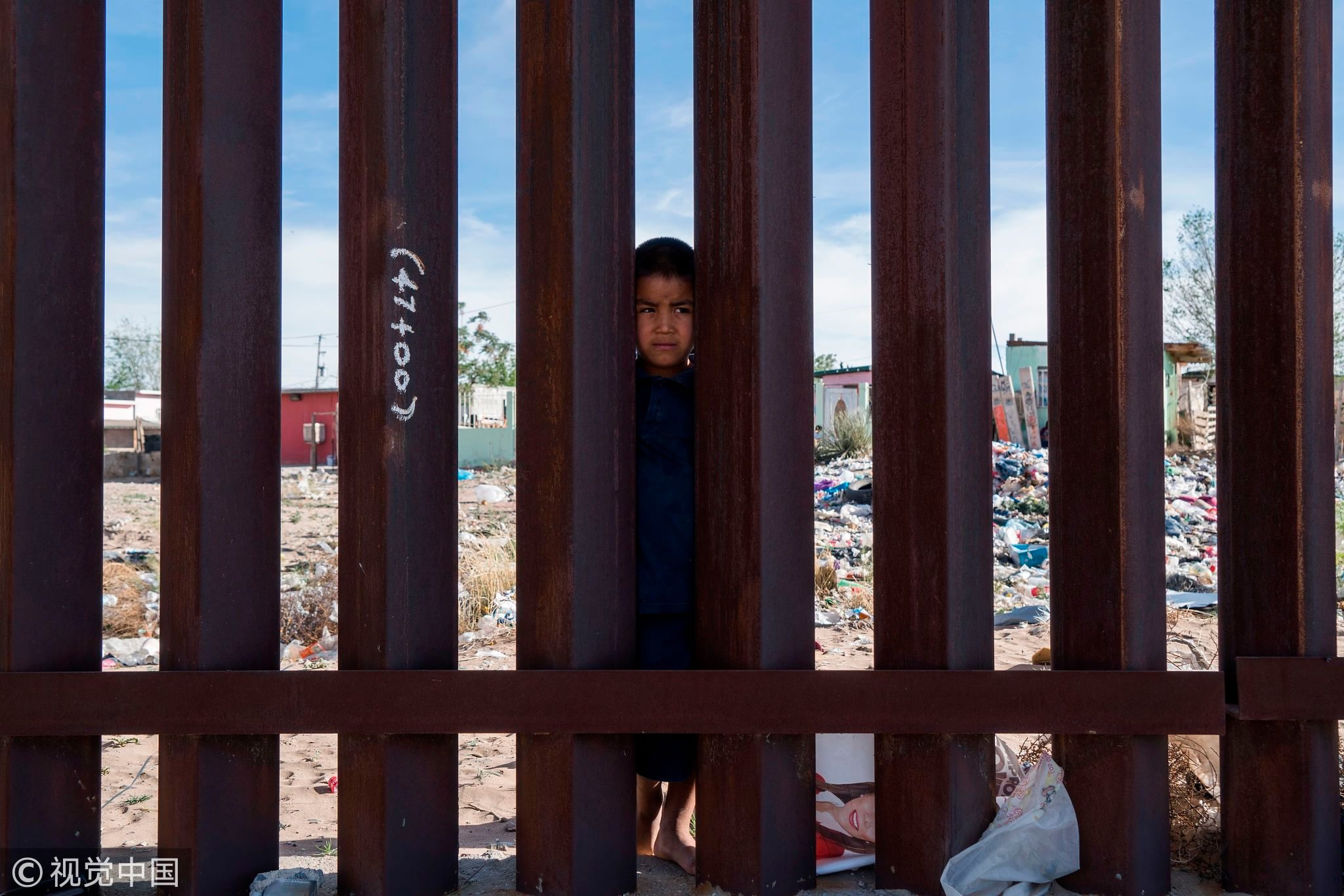
World
11:04, 26-Apr-2018
US-Mexican Border Wall--unwise choice to stop illegal immigrants
CGTN
03:40

There is a long and complex history of border issues between Mexico and the United States. Now, along the 3,200 kilometer frontier, a fresh controversy is brewing; the proposed US-Mexican Border Wall, President Trump’s response to the influx of illegal immigrants from Mexico.
Currently, around 900 kilometers – nearly a third of the border has been reinforced with various barriers, including walls, barbed-wire and other fences.
This prototype wall, which will eventually extend for 1,000 kilometers, originates on the Mexican coast at Tijuana. Extending eastward, it will cross another two Mexican cities: Tecate and Mexicali.

Houses are seen on the Mexican side of the US-Mexico border fence on April 6, 2018, in Jacumba, California. / VCG Photo.
Houses are seen on the Mexican side of the US-Mexico border fence on April 6, 2018, in Jacumba, California. / VCG Photo.
Yet, the border walls already constructed have resulted in damage to the local eco-system, as well as a mounting death toll of immigrants. In just 20 years, around 8,000 people have died trying to enter the US by crossing the border.
Every year, the border city of Tijuana takes in hundreds and thousands of immigrants from around the world who, either because of war or natural disaster, hope to find refuge in the US. Alpha Bouland from Ghana is one of them.
Alpha is penniless, and has been stuck in Tijuana for many months. US border officials have denied him entry into their country. He complains that being marooned in Mexico was not what he imagined, when he embarked on the dangerous 6,000-mile journey to get here.
Alpha is just one of 30,000 refugees trapped in Tijuana and denied entry into the United States. Most are from Haiti and other parts of Central America. Unable to return to their own countries, they have no option, other than to stay where they are. They are living together in groups of a dozen or more, in tiny apartments or tents. Locals provide the newly-arrived refugees with humanitarian aid.

US President Donald Trump signs an executive order to start the Mexico border wall project at the Department of Homeland Security facility in Washington, DC, on January 25, 2017. / VCG Photo.
US President Donald Trump signs an executive order to start the Mexico border wall project at the Department of Homeland Security facility in Washington, DC, on January 25, 2017. / VCG Photo.
The Mexican government estimates that, in the past two years, more than 30,000 Haitian and African refugees have arrived in the Mexican border cities of Tijuana and Mexicali.
Many of the refugees claim that they have virtually no chance of entering the United States by legal means. The US government continues to restrict the entry of immigrants, citing security concerns.
The White House is worried that terrorists might disguise themselves as refugees in order to plan attacks on US citizens. However, according to a recent report by the Washington-based Cato Institute, there has been no instance of refugees ever launching a terrorist attack in the United States. Mexico, like Canada, has actually been cooperating in the effort to stop refugees entering the US since 1980, when a watch-list of terrorist suspects was launched.
According to research by the College of Northern Border of Mexico, since the first US-Mexican border wall was built in 1994, instead of the expected fall in the number of immigrants, there has been a dramatic increase in the death toll among immigrants.

A young Mexican boy is pictured peering from the Mexican side of the Border Fence in Anapra, near El Paso, Texas on Saturday, April 7, 2018. / VCG Photo.
A young Mexican boy is pictured peering from the Mexican side of the Border Fence in Anapra, near El Paso, Texas on Saturday, April 7, 2018. / VCG Photo.
Does a country have the right to build a wall, in an attempt to solve the issues of illegal immigration and human trafficking? Juan Manuel Valenzuela, a scholar from the College of Northern Border, is concerned about the human rights implications.
“If the US thinks a barrier is justified, they’re entitled to build a fence on the border. But they have no right to blame refugees for terrorist attacks. This is unreasonable.”
In his opinion, the US has no right to ignore human rights and the rights of citizens. It has no right to condemn as criminals those immigrants who enter the US without visas.
“The US has no right whatsoever to indulge the spread of extremism and hatred. They should not allow the existence of extremist groups who murder immigrants. Nor should they ignore the important role immigrants have played in US economic development. ”

SITEMAP
Copyright © 2018 CGTN. Beijing ICP prepared NO.16065310-3
Copyright © 2018 CGTN. Beijing ICP prepared NO.16065310-3